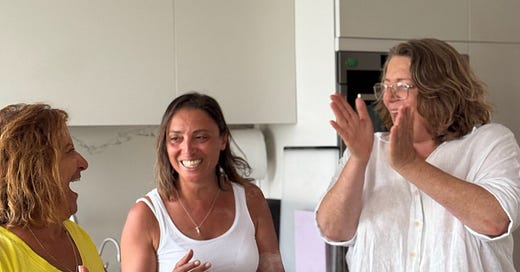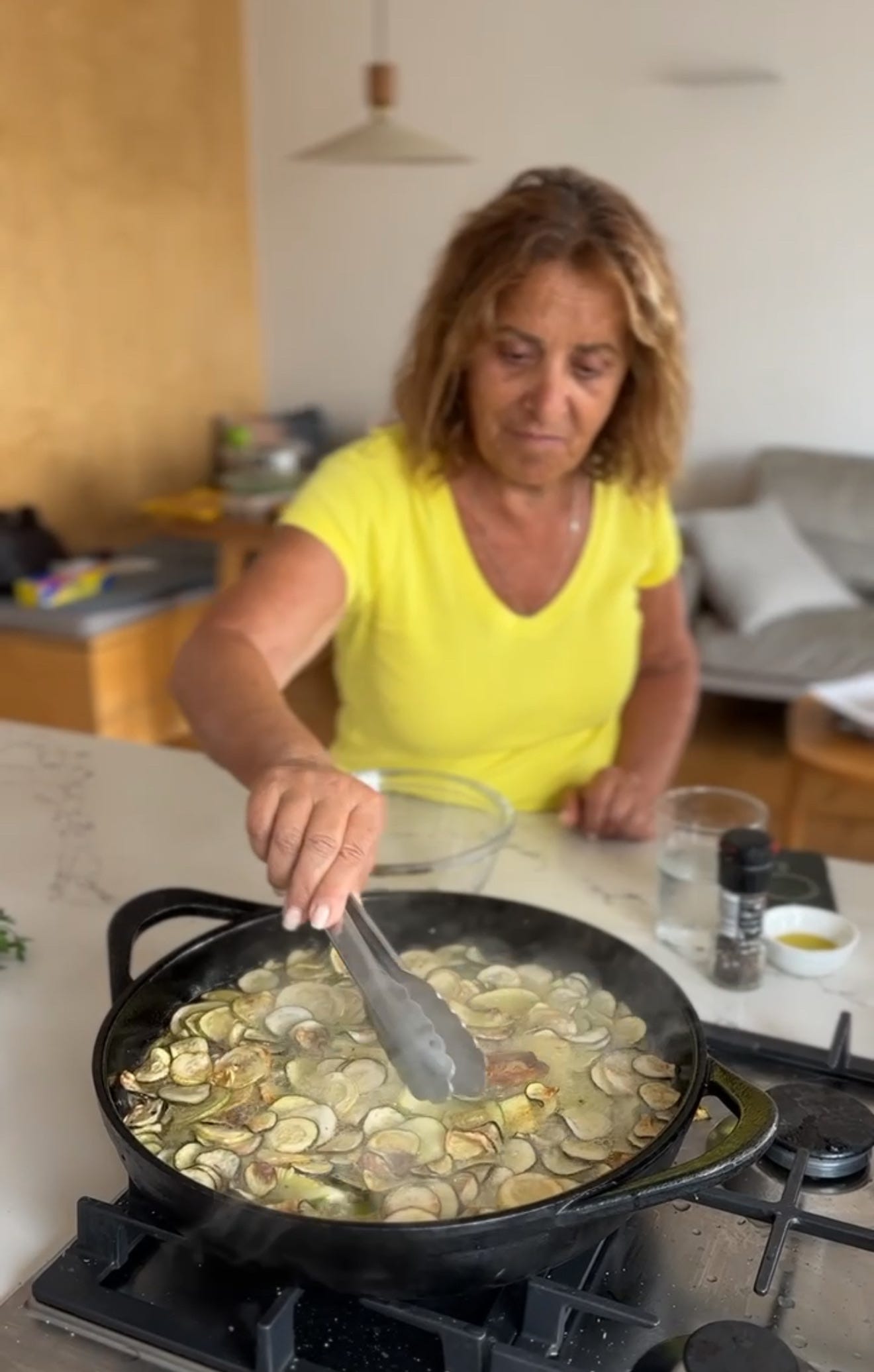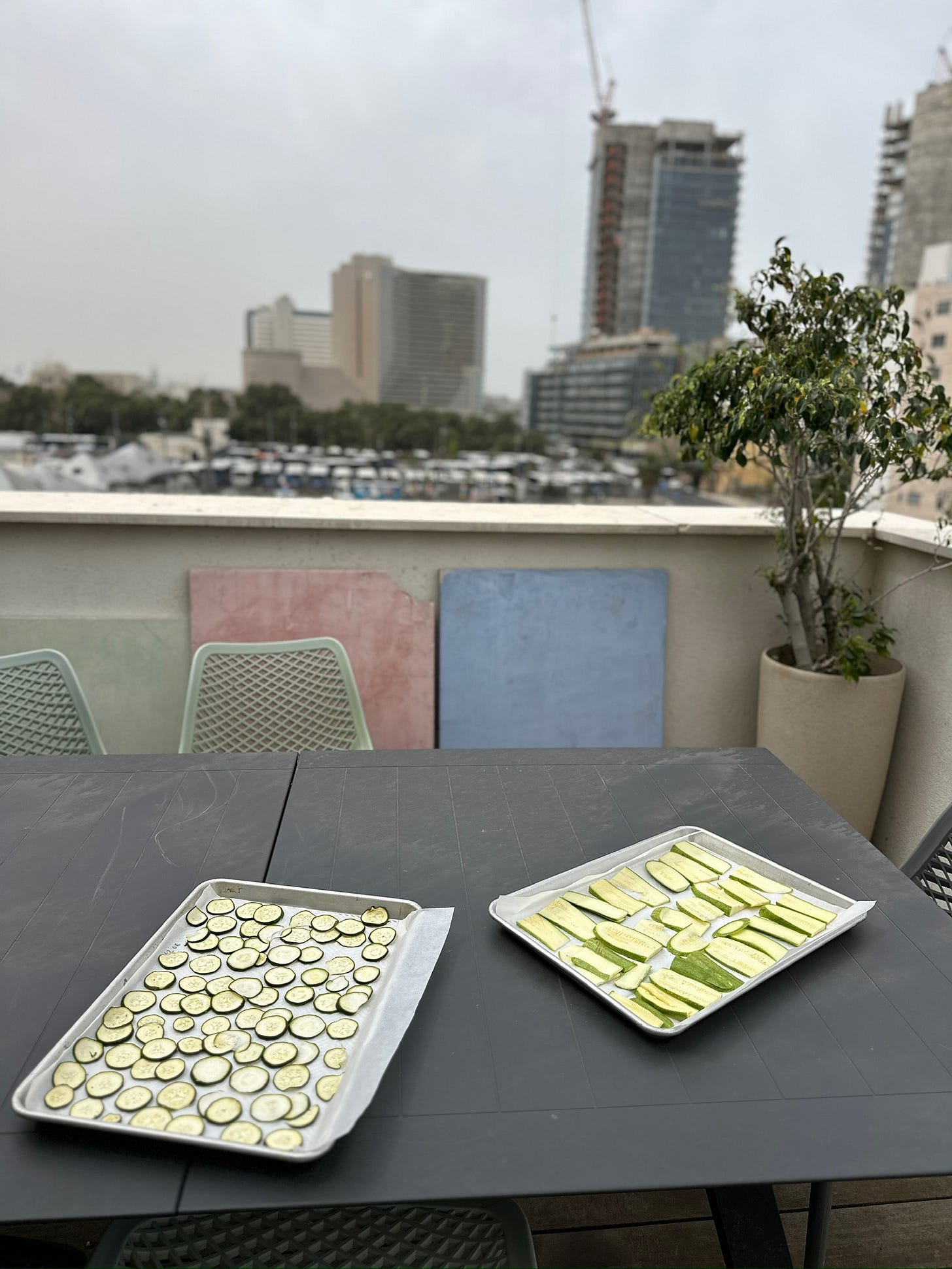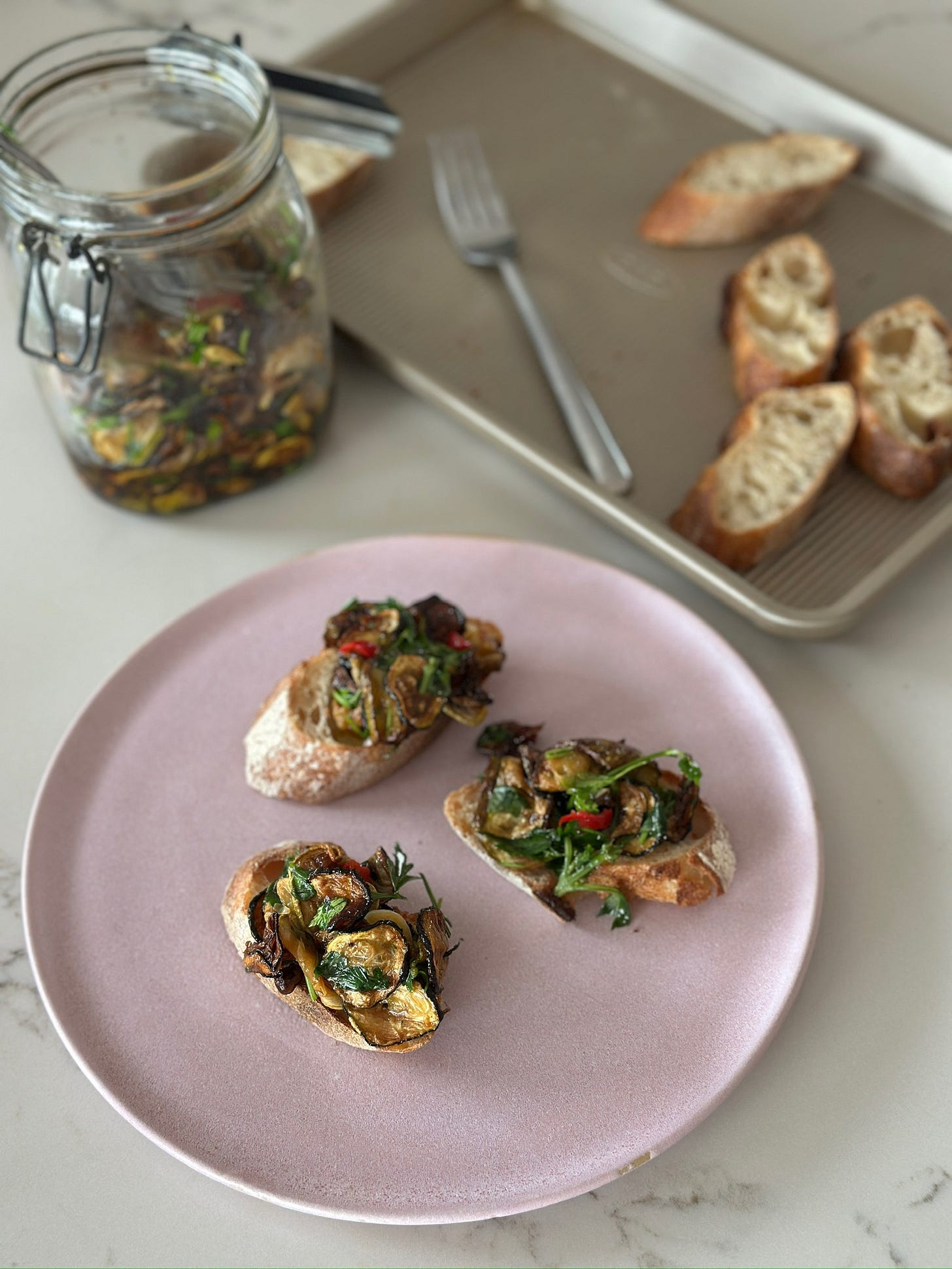If you’ve ever been to Rome and gone on a Jewish tour of the ancient ghetto (Rome has the second-oldest continuous Jewish community–over 2000 years old– after Israel) chances are you’ve met the unofficial mayor of Jewish Rome, Micaela Pavoncello (@jewish_roma on Instagram). A radiant, energetic spark plug of a human being, Roman-born Micaela first came onto my radar after my dad and stepmom took a tour of Rome with her many years ago.
Then my friend, the brilliant and prolific cookbook writer
, told me that she was working on a Roman Jewish cookbook and that Micaela was, essentially, her muse, giving of her time, life experience, and deep knowledge of the community to enhance Leah’s own prodigious research (the result is the marvelous Portico, released in Fall 2023)Soon thereafter, when I found myself in Rome before a vacation in Tuscany, I went on a tour of my own with Micaela–and it was even better than I expected. Her storytelling, connections in the community, and encyclopedic knowledge of Roman Jewish food combined for an unforgettable afternoon. We met 90-year-old locals who lived through the war; cut the line at a 300-year-old bakery to eat marvelous pastries studded with dried fruit, and munched on crisp Roman-style pizza cut into squares, topped with wafer-thin rounds of potatoes that crisped around the edges.
The tour was so unforgettable, in fact, that when I was in Rome last month, I was able to give my own friends a pretty decent tour based on what she taught me almost 1000 days before (and if you know anything about my memory of late, that’s a ringing endorsement). By the way, find out more about Micaela and her tours here.
We promised to get together when she was in Israel, and when she told me she would be here over Passover we agreed to finally cook something together.
“I was in the shuk, and the artichokes didn’t look good,” she told me in her lilting accent, a voice as sweet and sassy as a good aged aceto balsamico. You don’t mess with a Roman about artichokes, and besides, she was right. The season here began all the way back in January, and the ‘chokes were way past their prime.
But the zucchini? The zucchini seemed promising to her. I ran into the shuk and picked up both the more common local light-green variety similar to what Romans use at home, and the dark-green ones, which are better known to Americans. “Whatever is less watery,” she told me, though it was hard to tell. A combination felt like a good insurance policy, so that’s what I got.
“I’m bringing my mother with me, hope that’s OK,” she told me. An Italian mama in my house? Every day, preferably! On a sweltering heatwave day last week Micaela and her mother, Vivi, who lives in Tel Aviv part-time, made their way over so we could make Concia, a Roman-Jewish specialty of deep-fried zucchini marinated in vinegar, garlic, chili, and herbs. Many keep it on hand for spontaneous snacking and entertaining, and the season was NOW.
The word “Concia” is the Italian word for the process of preparing leather for tanning, because the zucchini is dried partially to reduce liquid before frying in oil (see recipe).
We began by slicing the zucchini very thin, then arranged them in a a single layer on sheet pans before setting out to dry in the sun for a few hours (this can also be done in the oven). A shuk visit later, they returned to begin frying. I was surprised to learn that we’d be frying in vegetable oil until I realized that we were deep frying the zucchini, which would require a huge amount of oil. “The olive oil comes in later, don’t worry,” Micaela told me. We heated the oil in a large, high-sided skillet, then submerged the zucchini coins in the oil, stirring and watching them darken until they were caramelized and a very deep dark brown, but not burnt. Vivi watched our every move ever the matriarch. Micaela checked every step with her mother. “After all these years, it’s her I am always trying to please. She’s my mirror,” said Micaela as Vivi nodded her approval.
We lifted the zucchini–which has lost about two thirds of its volume–into a bowl, let it cool, then added vinegar and an herby oil we’d made while the zucchini fried. Everything was loaded into a jar to be refrigerated, but first we toasted baguettes, piled the delicious, luscious, silky, spicy, garlicky, herby, and slightly sweet mixture onto the bread, and had a late afternoon snack fit for a king–or two queens in this case. We said our goodbyes, promising to cook again soon, either on Tel Aviv or Rome. I choose Rome–and the sooner the better.
Concia (Fried Marinated Zucchini)
Makes 2 ½ cups
Vegetable oil for frying
4-5 medium zucchini, (2 - 2 1/2 pounds)
5 tablespoons olive oil, divided
1/4 cup chopped fresh parsley
¼ cup chopped fresh basil
1 clove garlic, thinly sliced
½ red chili, thinly sliced
¼ cup white wine vinegar
1 tsp kosher salt, divided, plus more to taste
Toasted baguette slices, for serving
Thinly slice the zucchini. Arrange in a single layer, and dry in direct sunlight until the zucchini feels slightly fry to the tough, 2 to 3 hours. (You can also layer between paper towels for an hour, or bake in a single layer in a 150°F oven for 1 hour). In a small bowl combine 2 tablespoons of the olive oil with the chopped parsley and basil, garlic, chili, and ½ teaspoon of the salt. Heat 2 inches of oil in a large skillet over medium-high heat until a piece of bread sizzles and begins to turn golden on contact. Add the zucchini, stirring as you add, and fry stirring often until deeply golden, 15 to 20 minutes. Use a spider or fine mesh strainer to remove the zucchini to a large bowl, letting most of the oil drip back into the skillet. Cool slightly, then add the oil-herb mixture, vinegar, and remaining 3 tablespoons oil and ½ teaspoon salt. Toss to combine and season with salt to taste.
Transfer to a jar. Refrigerate for up to 1 week. Serve on toasted slices of baguette.








